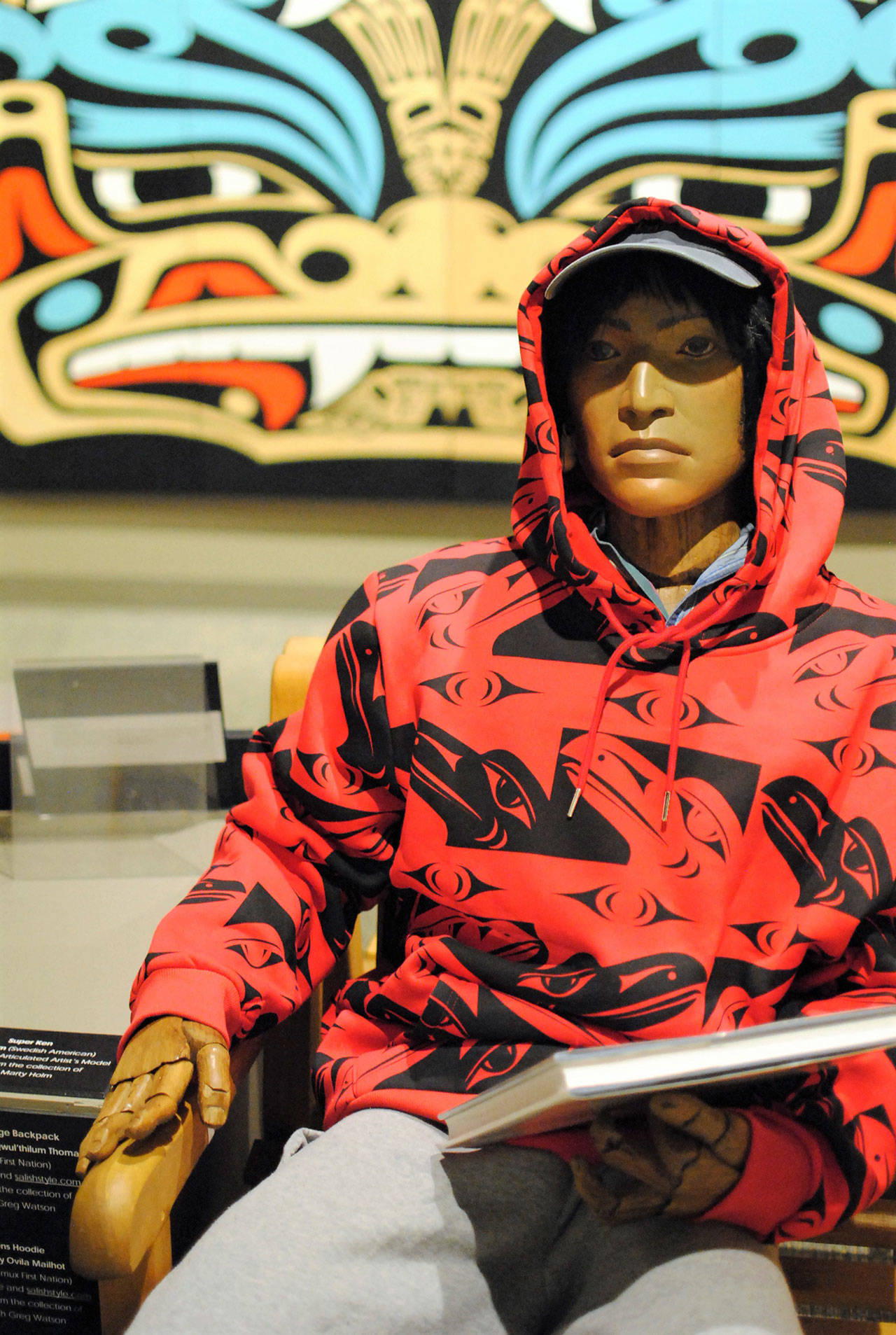Kenneth Greg Watson and Patricia Cosgrove first worked together in 1989 on Washington State’s Centennial exhibit of Native arts.
And for the past 28 years, their mission has remained steadfast: teaching residents and visitors that in all its creative branchings, Salish art is native to Washington state, and totem poles are not.
Now through Dec. 17, Puget Sound residents can “get their Salish on” by checking out Watson and Cosgrove’s latest collaboration, an unprecedented, six-month-long exhibition titled “Salish Modern: Innovative Art with Ancient Roots” at the White River Valley Museum.
Guest Curator Watson and WRVM Director Cosgrove, both art historians, picked the works of 16 artists of Salish heritage, from pieces by mature artists who are pioneers in their fields, to young, cutting-edge Native artists throughout the Salish Sea region, all recognized throughout the world for the design sophistication and elegance of their artistry.
While Salish, the family of related languages spoken by indigenous cultures of Western Washington and southern British Columbia, is often mistaken for the name of a tribe, Watson and Cosgrove are keen to see the word “Salish” enter the mainstream vocabulary, thereby ensuring that “the characteristic sweeping lines and subtle patterns of Salish arts” become recognizable and emblematic of the Puget Sound region.
Seattle’s Stonington Gallery, Steinbrueck Native Gallery and collectors and artists themselves have lent items to the show, among which are:
• A skateboard deck and one-of-a-kind decorated tennis shoes, by Louie Gong;
• A blown glass basket, by Dan Friday;
• Shaun Qwalsius Peterson’s metal and glass work;
• Weaving, by Gail White Eagle;
• And a cedar bark basket and cedar bark hat, one of the first by Lummi artistic visionary Fran James.
Sponsoring the exhibit are: 4Culture; the Association of Tribal Art Dealers of America; the City of Auburn Arts Commission; the Hugh and Jane Ferguson Foundation; and the Tulalip Tribe Charity Fund.
Collectively, these contemporary art pieces, say Watson and Cosgrove, demonstrate that Salish arts are “among the most modern and innovative of Native art expressions of North America.” All artists included are from the Salish Sea area, their affiliations ranging from the Cowichan Tribe of Vancouver Island and the Muckleshoot Tribe of the Auburn area to the Puyallup Tribe to the south.
Upcoming programs
• Native Storytelling with Roger Fernandes, member of the Lower Elwha Band of the S’Klallum Tribe: 7 p.m., Aug. 3, free, no registration required, but space is limited.
• Coast Salish Art Lecture by Lidia Sigo, Curator and Archivist at the Suquamish Museum: 7 p.m., Sept. 6, free, RSVP at wrvmuseum.org.
• Film Screening: Reel Injun: 1 p.m., Oct. 15, 1 p.m., free.
• Flute Concert, Remembering the Songs with Gary Stroutsos: 7 p.m., Nov. 8, $10, pre-registration required.
The Museum is open Wednesdays through Sundays from noon to 4 p.m. On the first Thursday of each month, the hours are extended from 6 to 8 p.m. The museum is at 918 H St. S.E. in Auburn. Regular admission is $5 adults, $2 seniors and children, but children 2 years of age or younger always get in free. Admission is free for everyone all day on the first Thursday and the third Sunday of every month. Call 253-288-7433 or visit www.wrvmuseum.org for event information.


